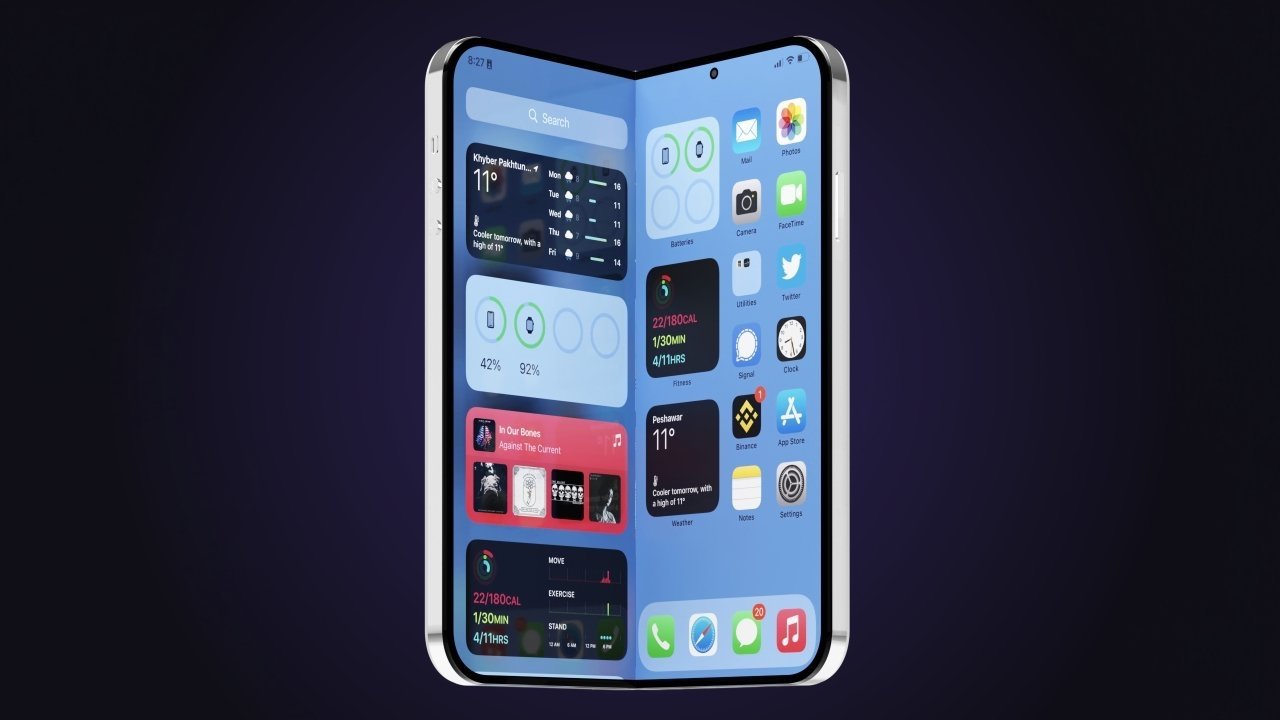
A new report says that Apple is developing a display panel that uses OLED, but with a thinner alternative to that technology's usual polarized layer, which could make for foldable iPhone and iPad screens.
As Apple broadens its OLED screen suppliers, and also presses for thicker two-stack iPad displays, it's developing a thinner option which could be for flexible, or foldable, panels.
According to The Elec, work has begun on an OLED panel that doesn't require a polarizing layer. Polarizing the screen improves the visibility of the display by limiting light to travel through only certain directions, instead of blurring or bleeding across the screen.
As well as meaning the display has a layer added to achieve the polarization, it also means that such screens require more battery power because the layer dims the brightness of the panel.
The Elec has no further details about Apple's development, but reports that Samsung used similar non-polarized OLED panels in its Galaxy Z Fold 3. Rather than a separate layer, Samsung printed a color filter directly onto the main TFE (thin film encapsulation) layer.
The fact that Samsung was able to achieve a thin enough display to use in its folding phones suggests that Apple may be looking to do the same. It could just be aiming to make thinner devices, but Apple has long been rumored to be investigating the idea of an iPhone Fold.
The Elec has a strong track record for its supply chain sources, but a significantly poorer one for the conclusions it draws about Apple's plans.